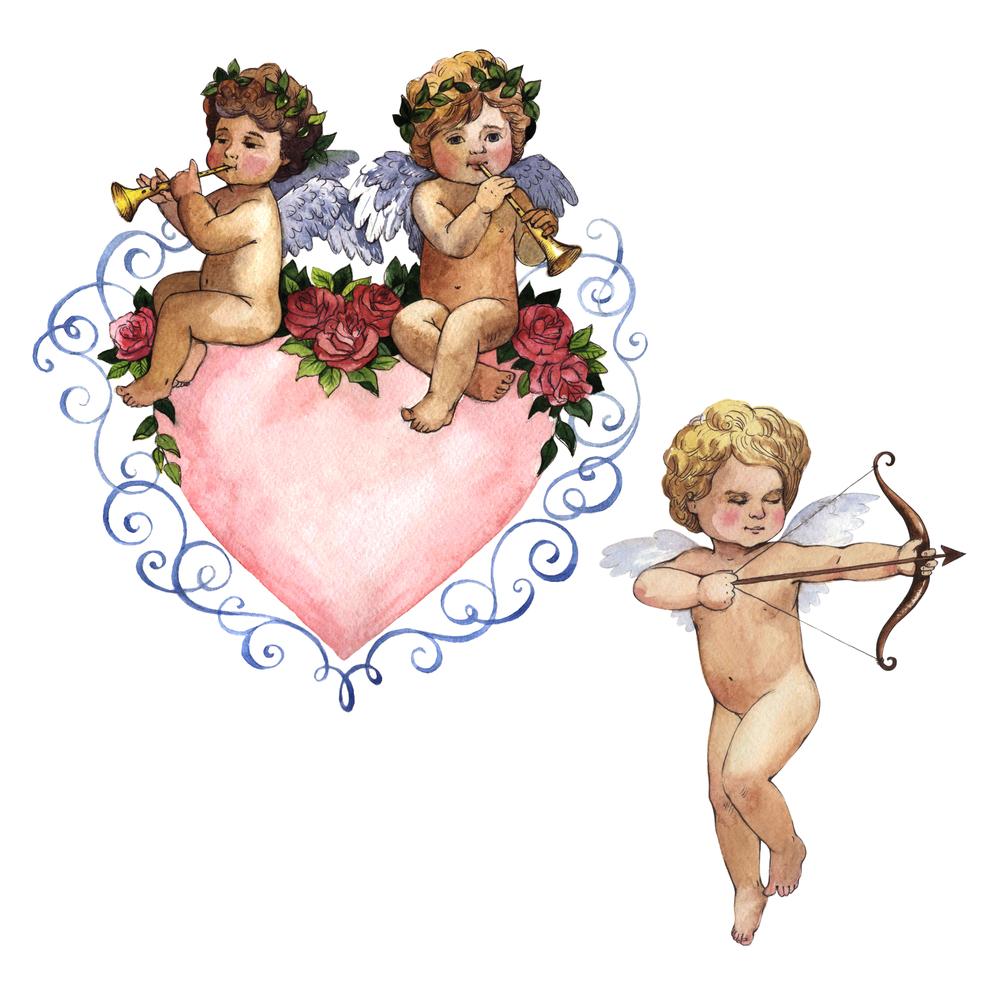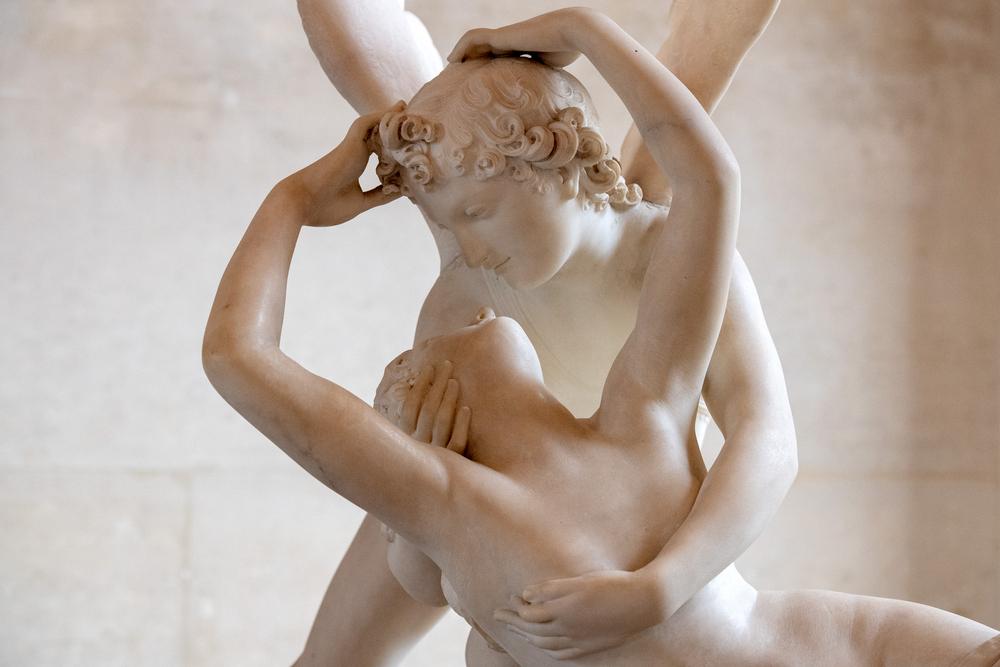Few mythological figures are as widely recognized as Cupid, the cherubic archer synonymous with love and romance. From greeting cards to classical art, Cupid symbolism has endured across centuries. But beneath the popular imagery lies a rich and complex mythological heritage. Source licensed Cupid images from Depositphotos for your love-themed projects
In this article, we explore the Cupid origin story, his role in mythology, and fascinating details that go beyond the heart-shaped arrows.

Who is Cupid?
In popular culture, Cupid is often portrayed as a winged child with a bow and arrow, capable of making people fall in love. However, in classical mythology, Cupid is far more than just a symbol of affection.
Known as Eros in Greek mythology, Cupid was later adopted into Roman mythology as Cupid, the god of love and attraction. He is the son of Venus (the goddess of love) and Mars (the god of war), a lineage that combines passion with power. In this context, who’s Cupid becomes clear—he is not merely a romantic mascot but a deity representing the complex dynamics of desire and emotional bonds.
Why is Cupid associated with love?
The connection between Cupid and romantic love is rooted deeply in mythology. His signature arrows, one gold-tipped and one lead-tipped, have the power to ignite love or sow indifference. When struck by a golden arrow, a person is filled with uncontrollable desire. Conversely, the lead arrow inspires rejection.
This duality lies at the heart of Cupid’s symbolism—his arrows represent the unpredictable nature of love. He doesn’t simply bring people together; he governs the emotional forces that attract or repel them. In answering the question, “What does Cupid symbolize?”, we find that he embodies both the joys and sorrows of love, passion, and vulnerability.
Furthermore, Cupid’s symbolism extends beyond romantic attraction, embodying love’s complex nature. His influence spans various desires, from romance to glory and power, cementing his status in understanding human emotions. This complexity has fascinated artists and writers for centuries, making Cupid an enduring cultural icon.

Cupid’s origin story
In earlier Greek tales, Eros was not the playful child we recognize today, but a primordial force—a powerful, even chaotic deity associated with creation and cosmic order.
As Roman culture absorbed and reinterpreted Greek myths, Eros transformed into Cupid, the more approachable, childlike god of desire. This evolution marked a shift in how love was perceived: from a universal, elemental force to a more personal, emotional experience. Through this transformation, Cupid becomes a figure who speaks to the divine mystery and the everyday magic of love.
The interconnection between Cupid and Valentine’s Day
The Cupid’s story has become increasingly romanticized over the centuries. While not originally tied to Valentine’s Day, Cupid’s imagery became a fixture of the holiday by the 18th century. His association with affection made him the perfect emblem for a day dedicated to romantic gestures.
In classical mythology, one of the most famous Cupid myths is his love story with Psyche—a mortal woman whose beauty rivals that of Venus. Despite obstacles, secrecy, and betrayal, their love endures. Eventually, Psyche is granted immortality, and they are united forever. This tale reinforces Cupid’s symbolic role as a divine force guiding true love through trials.

Fascinating facts about Cupid
Here are some compelling and lesser-known facts about Cupid that shed light on his complex persona:
- Cupid’s Roman mythology differs from his Greek counterpart, Eros, in maturity. While Eros was often depicted as a youthful man, Roman Cupid was typically shown as a mischievous child or baby—a transition that softened his image over time;
- In art, multiple cupids (known as putti) appear frequently. Though they resemble Cupid, not all putti represent him specifically. They often symbolize general love or innocence;
- The name “Cupid” stems from the Latin word “cupido,” meaning desire, perfectly encapsulating his role as the embodiment of romantic longing;
- The phrase “to be struck by Cupid’s arrow” originates directly from ancient mythology and reflects the sudden onset of attraction or love;
- In Renaissance and Baroque art, Cupid symbolism was sometimes used to represent divine love, carnal desire, or even the conflict between the two;
- Some Renaissance artworks, like the painting by Piero della Francesca, depict Cupid with a blindfold, symbolizing love’s ability to overlook flaws;
- Cupid sometimes rides a dolphin, symbolizing his influence over both the sky and sea;
- The Latin phrase “Omnia vincit amor” (Love conquers all) is often associated with Cupid;
- Cupid’s influence extends to psychology, with terms like “Cupid effect” describing heightened attraction;
- Cupid’s torch, another attribute, represents the flame of passion he ignites in hearts;
- Though Cupid is typically a singular figure today, in early myths, he was one of several gods of love and attraction, along with deities like Anteros (requited love) and Himeros (desire).
Conclusion
Understanding the origin of Cupid goes beyond Hallmark cards and Valentine’s Day symbols. The history of Cupid traces back to ancient civilizations that revered him as a powerful deity capable of influencing human emotion. Whether you’re exploring the deeper meaning behind what a Cupid is, uncovering the layers of Cupid history, or simply enjoying the charming myth of love Cupid, there’s far more to this figure than his winged appearance suggests. With a legacy rooted in both Greek and Roman traditions, the Cupid myth remains a captivating blend of love, chaos, and divine influence—reminding us that the power of love is timeless and transformative.











